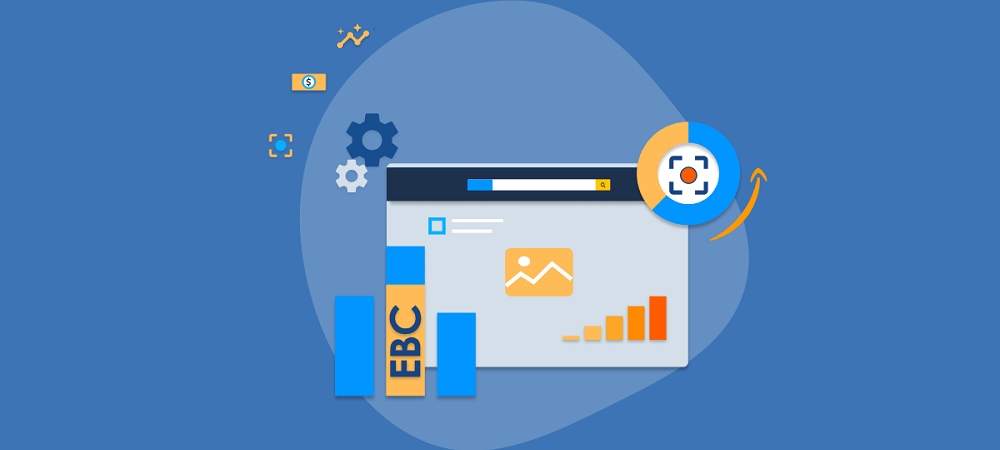
Although Enhanced Brand Content (EBC) is now replaced by A+ content, it’s important to look at how Amazon evolved to help brands tell their stories better on the platform. NOTE: If you already know the history of A+ content, here are 11 A+ content examples to learn from.
The history of Enhanced Brand Content
In November 2016 Amazon rolled out the EBC feature to allow sellers to add enhanced images, high-definition videos, and text content to their listings. EBC is Amazon’s way of letting brand registered sellers differentiate their products beyond the simple paragraphs of text typical with regular product descriptions.
Winning the sale on Amazon with text-only product descriptions was an uphill struggle, especially as competition was increasing. That’s why Amazon introduced the EBC feature to allow brand registered sellers to utilize text formatting options, multiple layouts, and other options to spruce up their product listings.
The main purpose of EBC content is to help sellers and vendors increase traffic, conversion rate, and sales. However, Amazon enhanced brand content is limited to brand registered sellers or those in special seller programs like Amazon Exclusives.
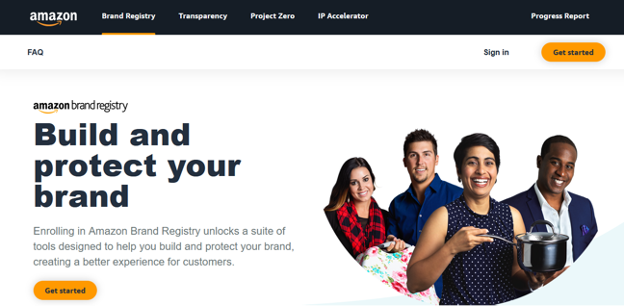
Once you sign up for Amazon Brand Registry, you can create EBC content for any ASIN and differentiate your products. Here is more on how to get started with Amazon Brand Registry.
A quick look at enhanced & non-enhanced product listings
This is what the main content area on a non-enhanced product listing looks like:
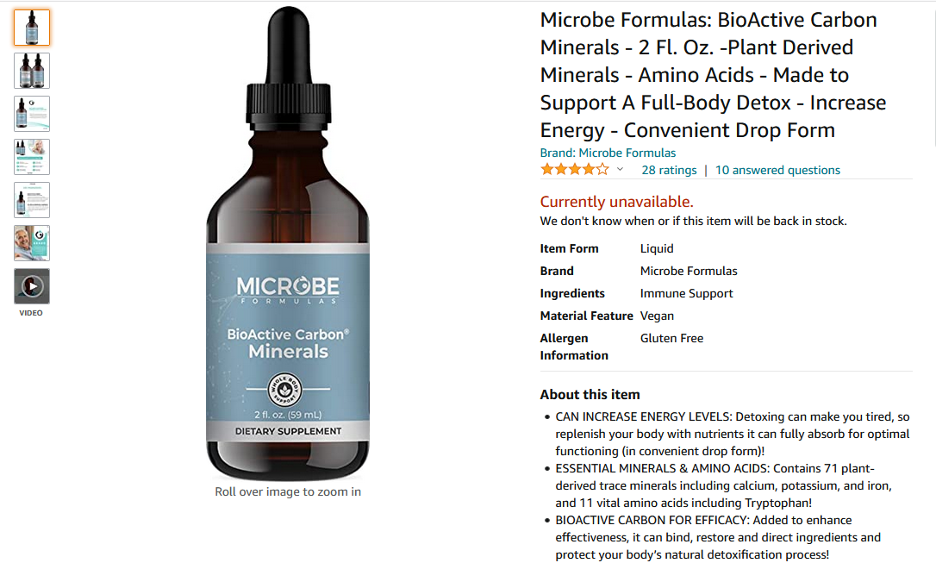
This is the product description for a non-enhanced product listing:
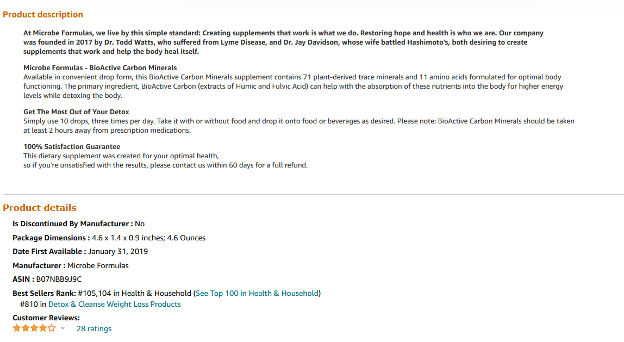
Below is an image of what an enhanced product description looks like:

When was Amazon Enhanced Brand Content discontinued?
Amazon discontinued enhanced brand content in July 2019 when they decided to merge A+ content, which was only available to vendors at that time (via Vendor Central), with EBC, which was only available to marketplace sellers (via Seller Central), to give both sellers and vendors the same set of tools with the A+ content manager.
What are the differences between A+ content and EBC?
Before EBC was scrapped, it was only available for marketplace sellers and was quite limited compared to A+ content for Vendor Central accounts. Amazon replaced enhanced brand content in all Seller Central accounts with A+ content.
Amazon enhanced brand content came with pre-made templates but A+ content allows users to manually choose their own module layouts. Besides, A+ content became free for Vendor Central accounts and Seller Central accounts and comes with more modules compared to EBC.
Generally, A+ content is the most effective way to increase conversion rates on Amazon listings. If you’re looking to differentiate your products and stay ahead of your competition, it’s important to leverage this feature and increase sales.
The differences between EBC vs A+ content
EBC and A+ content features were often in conflict with one another, so Amazon decided to merge everything into A+ content instead.
Enhanced brand content and A+ content are essentially the same thing, only that the latter comes with more modules and allows brand registered sellers to utilize rich images and a range of optimization techniques to create captivating product descriptions.
There’s so much that sellers could do with Amazon enhanced brand content. With this feature, sellers could convert text-only descriptions into captivating visual content.
EBC came with 5 pre-made templates, allowing sellers to choose what works best for them. Alternatively, sellers could create their own templates by connecting different modules such as sidebars, comparison charts, text, images, specs, and more.
EBC also allowed sellers to display videos on their product listing. Being huge converters, videos explain products clearly to customers; hence they help to increase conversion rate and prevent returns.
There are many things that got transferred to A+ content when Amazon rolled out EBC content. Here are the 6 major changes that Amazon made to the EBC feature:
1. Multiple ASINs
Previously, sellers could only submit A+ content via SKU. Besides, they could only submit to one SKU at a time. However, the new A+ content manager has changed everything to allow sellers to upload content to multiple ASINs.
This update allows sellers to add A+ content to an entire parentage and then make off the child ASINs they don’t need. This has not only allowed sellers to save time but has also made the whole process of creating and uploading content hassle-free.
2. Mobile previews
The new A+ content manager allows users to switch between desktop and mobile previews on the same screen. This capability has proven to be useful for smartphone users as they can optimize their content for mobile.
3. New modules
The new A+ content manager comes with two new modules: standard text and product description text. The image header with text module which was only available for marketplace sellers is now available for vendors as well in A+ content.
4. More languages
Previously, EBC supported only one language per country. This has changed with A+ content which supports multiple languages for a single country.
5. No more pre-made templates
EBC came with pre-made templates whereby users had to choose from the predefined options. Amazon’s A+ content allows sellers to choose which templates they’ll use to create enhanced content.
6. New dashboard
The new A+ content manager comes with a revamped dashboard that is more user-friendly. The new dashboard allows users to sort through their listings by name, date modified, language, types, and content status.
A deeper look at EBC
EBC was a way to visually enhance product descriptions to make them enticing to potential customers. This was one of the marketing services offered by Amazon to marketplace sellers.
Apart from making product descriptions captivating, enhanced brand content gave sellers a chance to share additional information about their products that could not fit in the main listing.
With EBC, sellers could utilize various product layouts to create a unique brand story that attracts potential customers. Enhanced brand content was particularly useful for sellers in highly competitive niches as well as those selling complex, new or innovative products. Generally, EBC offered endless possibilities for sellers.
Here is some enhanced brand content from our Paw5 client:

Here is some enhanced brand content from our Paleovalley client:
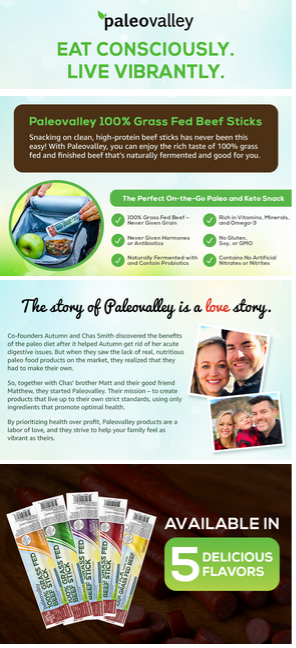
You may be wondering whether EBC is still accessible since we’ve mentioned about the feature being phased-out. All EBC is still accessible, but under a new name which is A+ content. As we’ve already mentioned, EBC and A+ content are the same concept, only that the latter comes with additional features.
A+ content is now available for both Seller Central and Vendor Central accounts.
Amazon enhanced brand content is still relevant today because it provides an effective branding solution to brand registered sellers. Without EBC, it would be difficult for sellers to stand out in the marketplace.
With competition on Amazon getting tougher every day, tools like enhanced brand content come in to help sellers to differentiate their products and attract more customers.
Sellers on Amazon are seeking better ways to customize their storefronts with rich images, engaging content, and beautiful headlines. EBC gives them the chance to capture their brand’s unique selling propositions and boost their conversion rates. This is another reason why EBC is still relevant today.
Amazon sellers who have leveraged this feature the right way have been able to reduce bounce rate, reinforce brand equity, and improve their ranking on Amazon.
Therefore, it is easy to see why EBC is still relevant to many sellers today.
How A+ content replaced EBC
Today, most of your branding efforts on Amazon will be done via A+ content templates and pages. There are 100s of ways to personalize your pages to fit your brand’s style and story.
Amazon A+ content is now accessible to any seller approved in the Amazon Brand Registry, professional sellers, or brand owners working through Amazon Exclusives or Amazon Launchpad.
A+ content in more detail
A+ content is a premium content feature that allows brand registered and professional sellers to make their product pages more attractive to customers.
With this feature, sellers can modify their product pages with rich images, custom text placement, comparison charts, sales copy, high-definition videos, and additional product details to tell their brand’s story.
The idea behind A+ content is to enhance the user experience to drive traffic to product listings and drive high conversions.
Amazon launched the A+ content manager in 2019, offering both sellers and vendors a collection of multimedia elements to influence purchase-decisions and conversions.
The following are examples of what A+ content looks like:
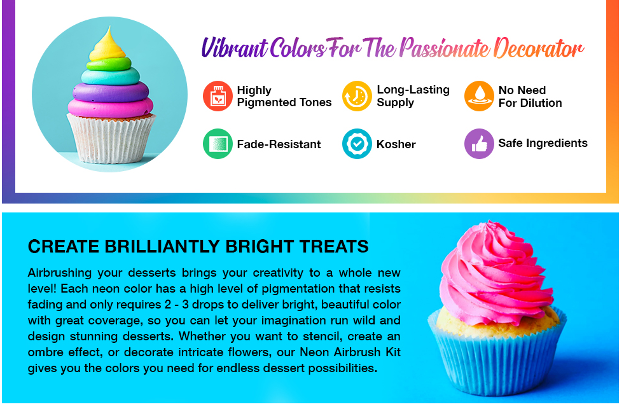
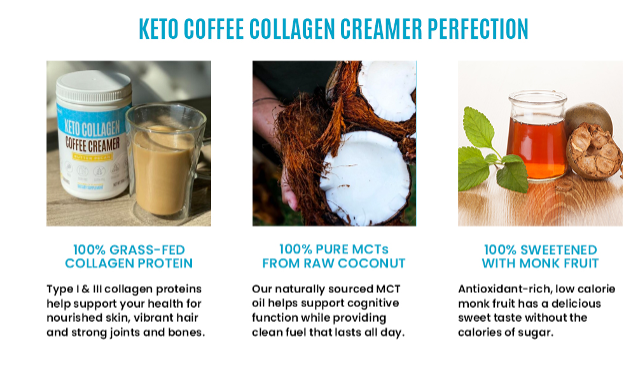
Templates are the building blocks of A+ content
With A+ content, you can choose between dozens of templates to create an A+ page, personalizing it specifically with your brand in mind, including layout.
There’s so much you can do with A+ content templates. By allowing you to add high-quality images, high-definition videos, and much more to your product page, these templates give you the best chance to attract customers and make more sales.
Before Amazon launched A+ content, it was quite difficult for sellers to stand out among the millions of sellers on the marketplace. But with A+ content templates, sellers can showcase their product’s unique value proposition to influence purchase decisions.
With A+ content templates, sellers can include additional information on their product pages and drive purchase decisions. Moreover, sellers have the freedom to choose the templates that will work best for them. This is an advantage for sellers because they can include as many product details as possible, explain how the product will solve customer’s pain points, how to use the product, and other useful information.
Also, brand registered sellers and professional sellers can leverage these templates to differentiate their products. The comparison chart module comes in handy for comparing and contrasting products to help customers make purchasing decisions.
The good thing about using A+ content templates is that they offer great flexibility. The A+ content manager allows you to customize content in standard and advanced modules. You can choose the modules that work best for you.
What are the limitations of A+ content templates?
A+ content templates allow sellers to showcase their product’s selling points in an appealing structure. However, these templates have a few shortcomings when compared to premium A+ content.
For instance, premium A+ offers seven modules per page while A+ content manager offers five modules. This means A+ content manager offers fewer possibilities for highly engaging content.
Also, premium A+ offers full-width imagery with a maximum content width of 1464 pixels while A+ content manager offers a maximum content width of 970 pixels. This means Premium A+ content offers more visually appealing imagery compared to A+ content.
Generally, Premium A+ content offers better features compared to A+ content manager. However, it is only available for a small group of elite merchants invited by Amazon.
In terms of cost, A+ content is free while premium A+ content costs between $250,000 and $500,000 per annum.
Pages: The final result of utilizing A+ content
With A+ content, your goal is to create pages that drive brand awareness and tell a rich story. This cannot be done with the traditional Amazon listings. Generally, an A+ page will contain visually appealing content such as rich images, high-definition videos, rich text placement, interactive comparison charts, robust FAQs, and much more.
However, A+ pages may differ from one seller to another because every seller includes what matters most to them. Therefore you can end up unique pages through combining different A+ modules.
Does A+ page increase sales?
It has been proven that A+ content helps sellers to increase sales by up to 10%. It’s a fact that visuals do influence consumer behavior, and using captivating visuals on your product page is a sure way to help buyers make a purchasing decision.
A+ content gives you the possibility to include as much information as possible on your product page. You can highlight everything that the consumer needs to know in a visually attractive way; hence enticing potential customers to buy your products.
By providing detailed information about your products, you can prevent returns and minimize the chances of getting negative reviews. This eventually translates to a higher ranking and more sales in the long run.
Also, attractive imagery, more detailed description, and robust FAQs give you a competitive edge against sellers using text-only descriptions.
A+ Content can increase your sales by 3%-10% as long as you’ve got all the other things right.
How to measure ROI for A+ content
You can measure your return on investment for A+ content using the same formula that is used to calculate ROI for other marketing campaigns. Simply subtract your total investment in A+ content from your total revenue and divide the total investment.
Multiply the number you get by 100 and you have your ROI. A higher percentage means you’re getting a good return on your investment.
There are tools you can use to measures ROI for A+ content, including Helium10 and our own Stonehenge solution.
Tell your brand story with Amazon A+ content (formerly EBC)
If you’re looking forward to building out your ecommerce business on Amazon, look no further than A+ content. EBC was good at its time but has now been rolled-into A+ content, and there are indications Amazon will continue to find ways to provide the ability to customize and improve your product listings.
If you need help getting started with A+ content, Emplicit, a leading results-driven Amazon marketing Agency for growing ecommerce brands, can help. Our content creation experts can deliver you improved conversions through A+ content which follows best practices and makes the most of your brand assets.
We are a professional Amazon brand management service that offers a range of services to help Amazon sellers take their business to the next level.

